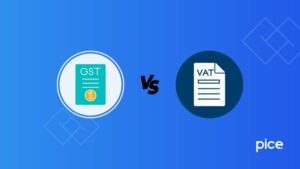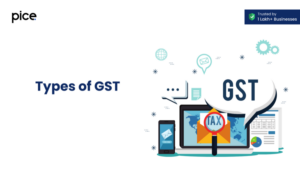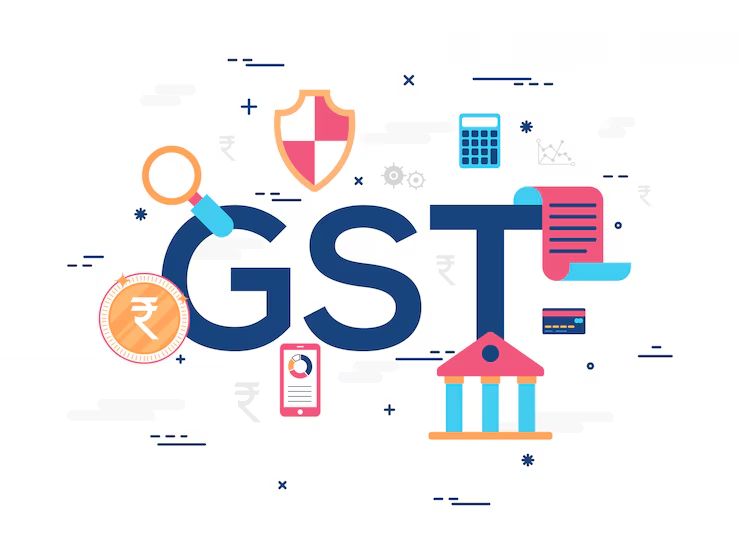What are the luxury items GST rates in India?
- 20 Sep 24
- 16 mins

What are the luxury items GST rates in India?
- What is a Luxury Tax?
- What is the purpose of a luxury tax?
- GST Rate on Hotel Accommodation
- GST Rate on Luxury Properties
- GST Rate on Luxury Cars
- GST Rate on Cigarettes and Tobacco Products
- GST Rates on Luxury Items
- Reasons Behind High GST Rates on Luxury Items:
- Impact of GST on Luxury Tax
- GST Framework and Its Impact on Various Sectors
- Conclusion
Key Takeaways
- GST Simplifies Taxation: The introduction of GST has consolidated multiple taxes into a single framework, simplifying the tax structure across India.
- Four-Rate Structure Balances Equity: GST's multi-tiered rate system ensures that essential goods are more affordable while luxury items contribute more to the tax revenue.
- Boosts Compliance with Technology: The mandatory use of e-way bills and advanced ERP systems under GST enhances compliance and reduces tax evasion.
- Periodic Reviews for Adaptation: The GST Council regularly reviews and adjusts tax rates and policies to align with economic changes and feedback from various stakeholders.
- Promotes Economic Uniformity Across States: By standardizing tax rates across the country, GST eliminates inter-state tax arbitrage, fostering a more cohesive national market.
A luxury tax is a type of indirect tax levied on products and services that are considered non-essential or luxurious. In India, this tax is primarily focused on high-end goods and luxury services, aimed at curbing excessive spending and generating additional revenue for governmental projects.
This article explores the various goods and services that attract a luxury tax, its purpose, associated rates, and the overall impact of the Goods and Services Tax (GST) on these taxes.
What is a Luxury Tax?

A luxury tax is an indirect tax placed on goods and services deemed non-essential or luxurious. Such items typically include expensive cars, jewelry, high-end electronics, and services like stays in luxury hotels.
The purpose of a luxury tax is twofold: it aims to generate additional government revenue and to discourage the consumption of luxury items. In many cases, luxury taxes are imposed to address economic inequalities, operating under the assumption that those who can afford luxury goods are able to contribute more to public resources.
In practice, the luxury tax is often structured in such a way that it only kicks in at a certain price point, ensuring that it targets higher-end products and services while leaving basic goods and services unaffected. This kind of taxation is common in various countries around the world, each tailoring the tax to suit its economic goals and the spending habits of its citizens.
What is the purpose of a luxury tax?
The purpose of a luxury tax is to serve multiple economic and social functions. Primarily, it is a fiscal tool used by governments to increase revenue without impacting essential goods and services. By targeting luxury items—those that are deemed non-essential and more likely to be consumed by the wealthier segments of society—governments can generate additional income that can be used for public expenditures, such as infrastructure, education, and healthcare.
Another key reason for the implementation of luxury taxes is to discourage excessive consumption of luxury goods. This can have environmental benefits, as reducing the demand for high-end goods may also decrease the resources and energy used in their production and consumption.
Moreover, luxury taxes can help address social inequalities. By imposing higher taxes on luxury items, the burden of taxation is shifted towards those who are more capable of affording them, thereby potentially reducing the financial strain on lower-income individuals and families who spend a larger proportion of their income on necessities.
GST Rate on Hotel Accommodation
The GST rates on hotel accommodation in India are determined based on a structured tax slab system designed by the GST Council. This system is intended to streamline tax implementation across different sectors, including hospitality. The GST rate structure for hotel accommodation charges is as follows:
- No GST: Applied to room tariffs below INR 1,000 per night, making budget-friendly accommodation more accessible without additional tax burden.
- 12% GST: Charged on room tariffs ranging from INR 1,000 to INR 7,500 per night. This slab covers a significant portion of mid-range hotels, balancing affordability with quality.
- 18% GST: Applied to luxury accommodations with room tariffs of INR 7,500 and above per night. This highest slab targets the premium segment of the market, reflecting the luxury nature of the services provided.
The GST Council, which is in charge of all GST-related policy decisions, regularly reviews these tax slabs. The council's decisions aim to optimize revenue collections while considering the impact on various industries, including tourism and hospitality. The GST rate adjustments are made based on detailed analyses and discussions during GST Council meetings, which include representatives from all Indian states and territories.
This tiered tax structure helps in achieving multiple objectives:
- It supports the hospitality industry by providing clear and predictable tax rates.
- It encourages tourism by making accommodation more affordable through lower tax rates on budget and mid-range hotels.
- It generates substantial revenue from luxury accommodations, which can afford to contribute more due to their higher pricing.
GST Rate on Luxury Properties
The GST rate on luxury properties in India is designed to address both revenue generation and the regulation of the real estate market, particularly in the higher-end or luxury segment. For the purposes of GST, luxury properties are typically defined as residential dwellings that are priced significantly above average and offer premium amenities.

- 12% GST: This rate is applicable to luxury residential properties. It includes the cost of construction and all major amenities that are typically associated with high-end living. This rate is intended to ensure that the luxury segment contributes fairly to tax revenues, reflecting the higher economic capabilities of buyers in this market segment.
Key Points:
- Input Tax Credit (ITC): Developers of luxury properties can avail of the input tax credit for taxes paid on their inputs, such as raw materials and services used in construction. This helps in slightly offsetting the total tax burden on the final product, aiming to prevent a cascading effect of taxes.
- Affordable Housing Distinction: The GST Council provides a lower tax rate for affordable housing (currently at 1%) to promote more inclusive housing solutions. This distinction emphasizes the higher rate applied to luxury properties, underscoring the progressive nature of GST in the real estate sector.
- Reason: The higher GST rate on luxury properties is justified by the ability-to-pay principle in taxation, which posits that those with higher income levels should contribute more in taxes. This approach helps in redistributing economic responsibility while funding public services and infrastructure that benefit society at large.
GST Rate on Luxury Cars
In India, the GST rate on luxury cars is carefully structured to reflect both the luxury nature of these vehicles and the government's fiscal strategy. Luxury cars, being high-end goods, are taxed at a higher rate under the GST system to ensure that they contribute significantly to government revenues.
Key Aspects of the GST Rate on Luxury Cars:
- Basic GST Rate: Luxury cars are generally subject to a basic GST rate of 28%. This is among the highest GST rates applied and reflects the non-essential nature of luxury cars compared to basic necessities.
- Additional Cess: On top of the basic GST rate, luxury cars also attract an additional cess. The cess can range from 1% to 22% depending on the car’s specifications, such as engine capacity and cost. This cess is specifically levied on luxury cars to further enhance revenue from high-end consumer goods.
- Purpose of High Tax Rate: The higher tax rates and cess are intended to serve dual purposes. Firstly, they generate substantial revenue for the government, which can be used for public welfare and infrastructure projects. Secondly, they help in moderating the consumption of luxury goods in line with environmental and economic sustainability goals.
- Impact on Consumer Choice: The high tax burden on luxury cars influences consumer behavior, potentially leading to a preference for less expensive or more fuel-efficient vehicles, aligning with broader environmental objectives.
- Revenue and Policy Considerations: The GST Council, which includes representatives from all Indian states and the central government, makes decisions regarding the GST rates and cess on luxury cars. The council periodically reviews these rates to ensure they align with fiscal policy and economic conditions.
GST Rate on Cigarettes and Tobacco Products
In India, cigarettes and other tobacco products are subjected to a combination of Goods and Services Tax (GST) and cess, which is significantly higher compared to many other goods due to the health implications associated with their use.

The GST structure aims to impose a substantial tax burden on tobacco products to discourage their consumption, aligning with public health objectives.
GST Rate and Cess on Cigarettes and Tobacco Products:
- Basic GST Rate: Tobacco products, including cigarettes, are taxed at the highest GST slab of 28%. This rate reflects the non-essential nature of these products and the government's intent to reduce consumption through higher pricing.
- Additional Health Cess: On top of the GST, cigarettes and tobacco products incur an additional cess. The cess includes a combination of a specific rate per thousand sticks plus an ad valorem rate, calculated based on the length and type of the cigarettes. This dual-cess structure ensures that higher-end products are taxed at a higher rate.
- Revenue and Health Policy: The high taxation of tobacco products serves a dual purpose. Primarily, it acts as a deterrent to reduce smoking rates among the population, which is beneficial for public health. Secondly, the revenue generated from these taxes is substantial, contributing significantly to the health sector and other government funding needs.
- GST Council's Role: The rates and the structure of the cess are determined by the GST Council, which reviews these periodically based on economic, health, and revenue outcomes. Any changes or updates in the tax rates or structures are decided during the GST Council meetings, where all states and union territories have representation.
- Impact on Revenue and Public Health: While high taxes on tobacco are intended to decrease consumption, they also generate a dilemma of potential revenue losses if consumption significantly declines. However, the overall public health savings from reduced tobacco use generally offset these losses.
GST Rates on Luxury Items
- High-End Electronics: Items such as expensive smartphones, high-end laptops, and luxury home appliances are generally taxed at the highest GST slab of 28%. This rate is intended to reflect the luxury nature of these products.
- Designer Clothing and Footwear: Luxury clothing and footwear, particularly from high-end brands, are typically taxed at a rate of 18% or 28%, depending on the item's value. The higher rate applies to goods considered to be more luxurious.
- Jewelry and Watches: Precious metal jewelry and high-value watches are subjected to a GST of 3% for precious metals and up to 28% for luxury watches, considering the materials and the brand's market positioning.
- Cosmetics and Beauty Products: Luxury cosmetics and perfumes often attract a GST rate of 28%, aligning with their positioning as luxury goods not essential for basic hygiene.
Reasons Behind High GST Rates on Luxury Items:
- Revenue Generation: The wealthier segments of society typically consume luxury goods. By imposing higher tax rates on these goods, the government can generate significant revenue without placing a burden on lower-income consumers, who spend a larger proportion of their income on essentials.
- Discouraging Non-Essential Consumption: Higher tax rates on luxury goods can also help curb the consumption of non-essential items, which is part of broader economic and environmental strategies.
- Equitable Tax System: The progressive nature of GST on luxury items ensures that those with the means to purchase high-end goods contribute more to the state's finances, which can be used for public services and infrastructure.
Impact of GST on Luxury Tax
The introduction of the Goods and Services Tax (GST) in India significantly impacted the taxation of luxury items. Prior to GST, luxury taxes were imposed at the state level, leading to a lack of uniformity across different states. GST has streamlined this by setting a standardized rate of taxation across the country for luxury goods, leading to several key impacts:

- Simplification of the Tax Structure
GST replaced a plethora of indirect taxes—including state luxury taxes, VAT, service tax, and excise duty—with a single, unified tax system. This simplification helped reduce the complexity of the tax structure, making it easier for businesses to comply and reducing the administrative burden on tax authorities. For luxury goods, this meant a more predictable and transparent taxation framework.
- Uniformity Across States
Before GST, different states could levy varying rates of luxury tax on the same goods, leading to price discrepancies and competition among states. With GST, luxury items are taxed at the same rate across all states and territories, promoting a more uniform market and helping to eliminate tax-driven price advantages that might have existed in certain states.
- Increase in Tax Revenue
The broader tax base under GST could potentially increase tax revenues from luxury goods. By streamlining the rates and reducing evasion through better compliance and enforcement mechanisms, the government has been able to tap into a more stable revenue stream from the sale of luxury goods.
- Price Adjustments
The impact of GST on the prices of luxury goods has been mixed. While the simplification of the tax structure generally leads to reduced compliance costs, the higher tax rates under GST for luxury items may have led to price increases in some sectors. However, the input tax credit available under GST has allowed businesses to offset some of the costs involved in the production and distribution of luxury goods, potentially stabilizing prices over time.
- Impact on Consumption
The intent behind higher GST rates on luxury goods is also to curb the consumption of non-essential high-end products. While this might lead to reduced consumption in some segments, the overall impact varies based on the price elasticity of demand for these products. Consumers of luxury goods are often less price-sensitive, so the impact might not be as significant as intended.
- Encouraging Legal Imports
High taxes on luxury goods under the pre-GST regime encouraged grey market and illegal imports to evade taxes. With GST enforcing uniform tax rates and streamlining the process of importation, there has been an incentive to decrease illegal market activities and increase legal imports, which are easier to track and tax.
GST Framework and Its Impact on Various Sectors
GST Rates, Slabs, and Luxury Tax:
The GST framework in India includes several rate slabs (5%, 12%, 18%, and 28%) that cater to different categories of goods and services. Luxury items typically fall under the highest slab of 28%. This includes luxury cars, high-end consumer electronics, and other expensive goods, which are also subject to a compensation fee that varies based on the item.
Influence on Specific Industries
- Petroleum Products: Although mostly outside the purview of GST, discussions have been ongoing about including these under GST to standardize rates of taxation across the country.
- Non-AC Restaurants: These benefit from a lower GST rate of 5%, making dining out more affordable and boosting the food and beverage industry.
- Mobile Phones and Electronics: Initially taxed at 12%, mobile phones saw a rate increase to 18% to correct the inverted duty structure, impacting prices and consumption patterns.
- Educational and Human Health care Services: Both sectors are largely exempt from GST, supporting public access to essential services. However, certain value-added services within these sectors might attract GST.
Impact on Consumer Behavior
- Luxury Goods: High GST rates on luxury goods are intended to reduce consumption and ensure that those who can afford these goods contribute more in taxes.
- General Consumer Products: For everyday items, the aim is to maintain reasonable tax rates to avoid undue burden on the general population.
Business Compliance and Administrative Aspects
- E-Way Bill: An important compliance mechanism under GST for the transport of goods worth more than INR 50,000.
GST Returns and Processing: Businesses are required to file periodic returns, which have been simplified through various GST-compliant software solutions. - Compensation Cess: This is an additional composition cess applied to certain luxury and sin goods, over and above the highest GST rate of 28%. The revenue collected from this cess is used to compensate states for any loss of revenue due to the implementation of GST.
International Comparisons and Adjustments
- Comparative Taxation: India’s GST system is often compared with VAT systems in countries like the UK and Singapore, where tax rates are considerably lower for luxury goods.
- Rate Revisions: The GST Council periodically reviews the tax rates and structures to adapt to changing economic conditions and feedback from various stakeholders.
Challenges and Future Directions
- Rate Rationalization: There are ongoing discussions about further rationalizing GST rates to reduce the number of slabs and bring more items under the GST umbrella.
- Inclusion of Exempt Sectors: Bringing sectors like petroleum under GST is a topic of extensive debate due to its potential impact on revenue and prices.
Conclusion
Luxury tax and GST on luxury items play a crucial role in the Indian economy, balancing between generating revenue and controlling the consumption of luxury goods. As the economy grows and consumer preferences evolve, the approach to taxing luxury goods continues to adapt.
💡If you want to pay GST dues with a credit card and experience the convenience and possibility of earning rewards on payments, then download PICE business payment app now.
FAQs
What defines a luxury item under GST?
items are typically set at the highest brackets, such as 18% or 28%, to reflect their non-essential nature.
 By
By 


















